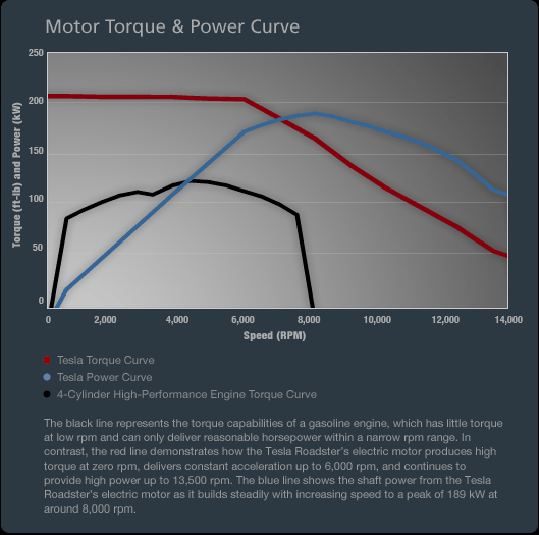Forum Discussion
4x4ord
Dec 15, 2018Explorer III
jharrell wrote:valhalla360 wrote:
Correction, the horsepower band for a gas motor is typically wider than an electric motor.
It has to do with the fact that typical electric motors can generate peak HP from 0 to max RPM...the result is the higher the RPM, the higher the HP (sometimes at the top there are some oddities in the torque but they typically are outside normal operating ranges). The result is a linear increase in available HP as RPM increases.
On the other hand, typical gas engines (and diesel) start with relatively low torque and the torque increases as the RPM increases ...but as you near peak RPM, the torque often starts to drop off. The result is the actual HP being generated (not the rating) for a similarly rated engine starts lower but builds more quickly before dropping off around the peak RPM...
This results in a range of ideal RPM where you can produce peak (really near peak) HP for a particular engine. For an electric, peak is generally only at the peak RPM.
Not sure what electric motors you are looking at but this is not my understanding. An induction motor such as on a typical electric pump will pull current based on load exceeding its rated hp if needed at any rpm (perhaps tripping a breaker or overheating). The locked rotor torque and pull up torque can be much higher than rated torque in order to bring the motor up to operating speed.
I guess one issue is the case of a set speed induction motor is how hp is rated between gas and electric, gas is peak, while the electric is operating hp. A 3/4 hp electric motor may have a peak of well over 2 hp from zero to operating speed.
When you get into variable speed electric motor such as those used in cars the power band is still far superior. For instance Tesla has peak hp at 8000 rpm but produces more than 80% of peak from 6000-13,000 rpm, a 7000 rpm range that is an rpm range greater than the entire operating range of many gas engines. Hence the need for only a single speed transmission:
Keep in mind that reving the engine from 6000 rpm to 13000 rpm is only increasing the vehicle speed by a factor of 2.17. The Cat in my Peterbilt makes 400 HP by 1100 rpm, reaches a peak of 500 hp by 1300 rpm and holds the power flat to 2100 rpm. So even a big slow turning diesel can double the speed of the vehicle while maintaining 80% of its peak HP.
About Technical Issues
Having RV issues? Connect with others who have been in your shoes.24,344 PostsLatest Activity: Dec 26, 2025
